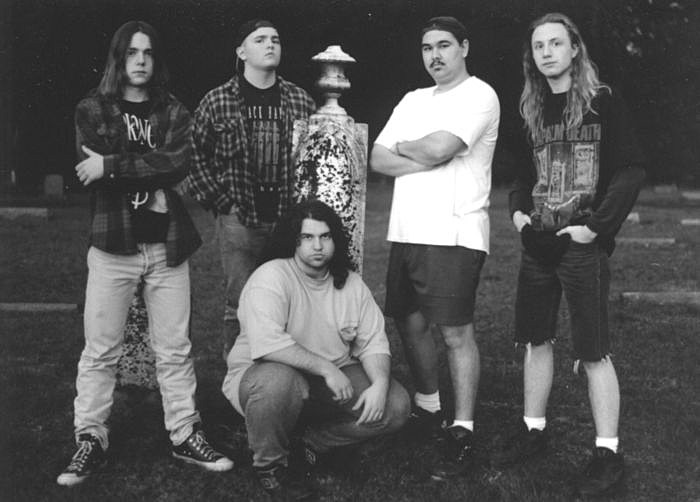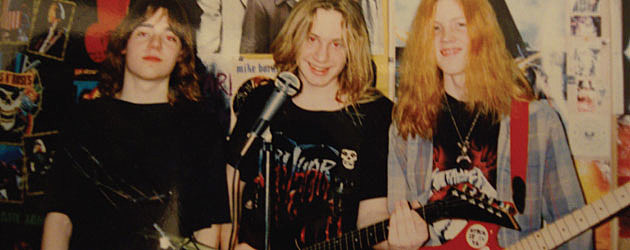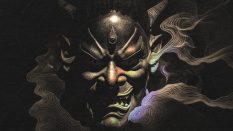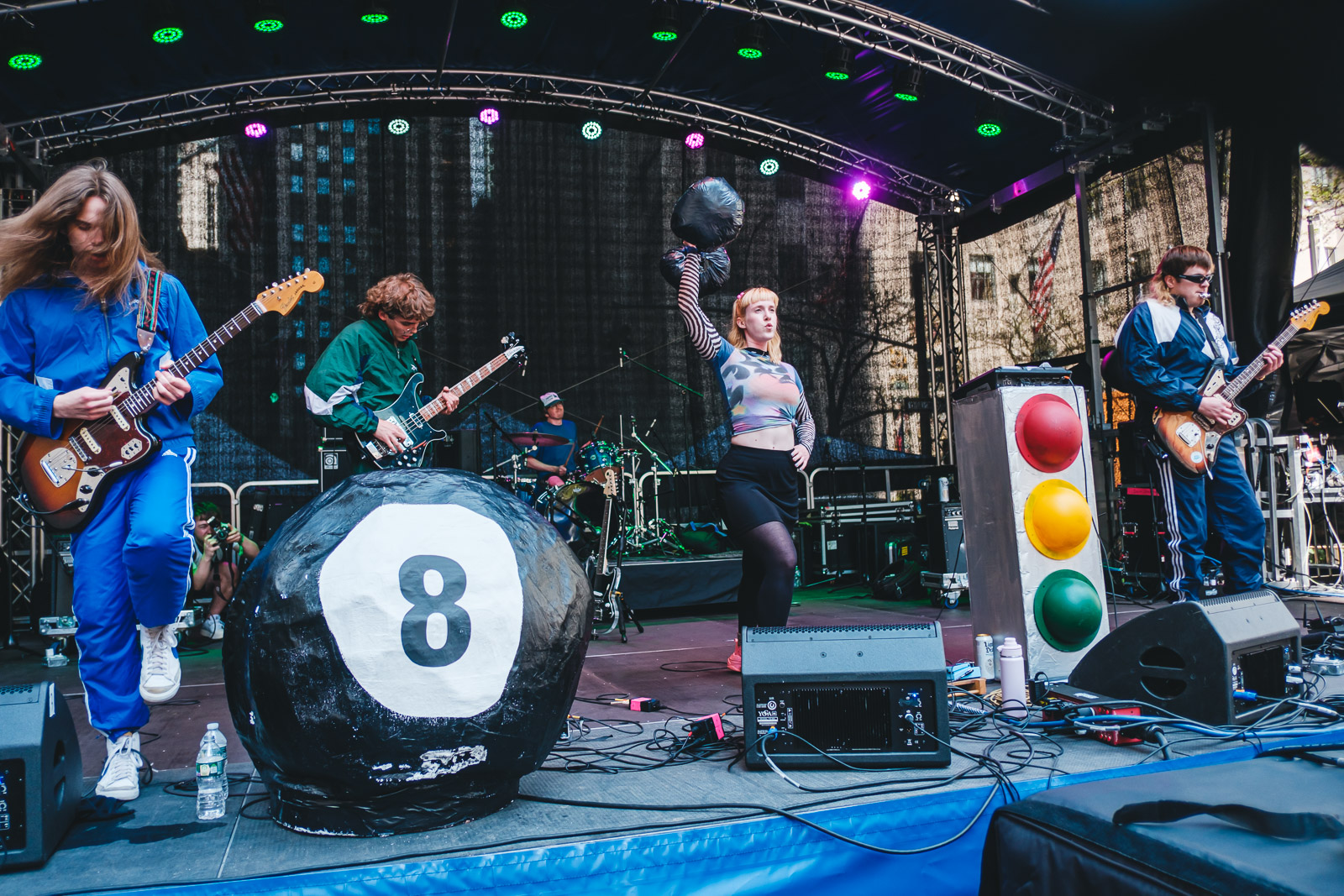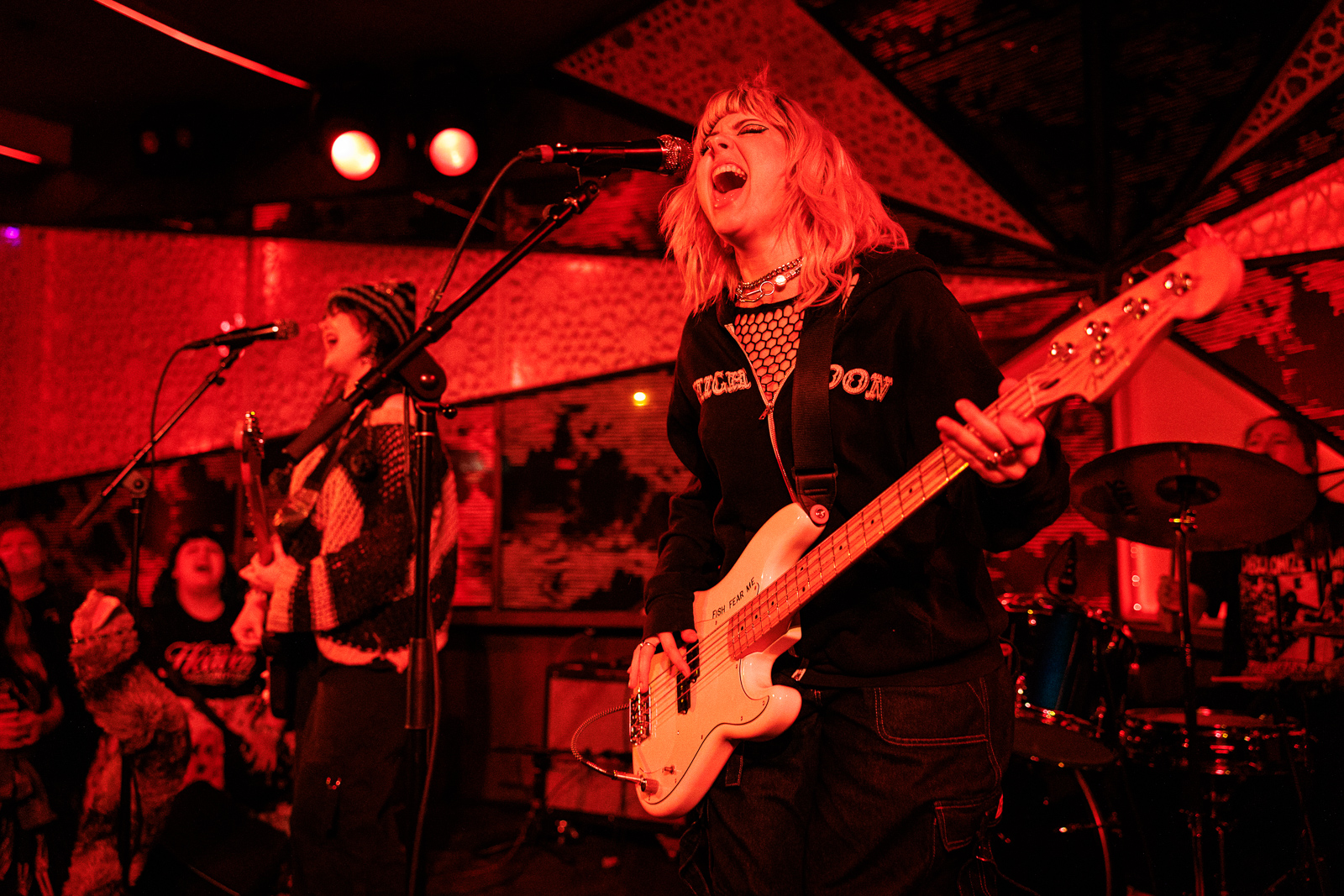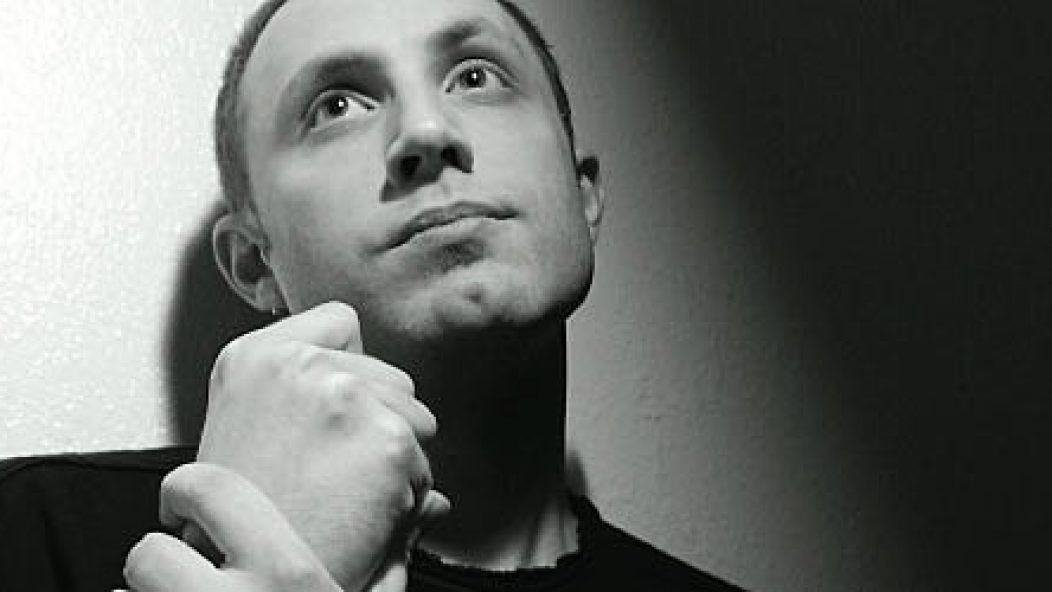
Interview: Sculptured's Don Anderson
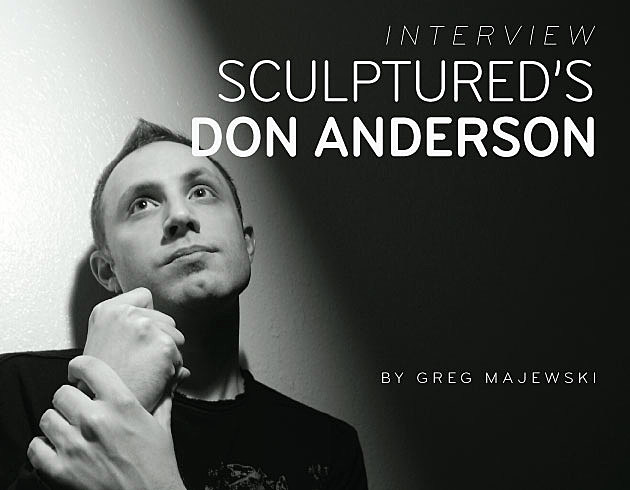
Sculptured’s debut, The Spear of the Lily is Aureoled, is a prototypical forgotten gem. Released on then-upstart The End Records at a time when American death metal was all but dead itself, the album had more in common with European avant-garde and melodeath acts than anything on these shores. The years following its release saw founder and mastermind Don Anderson balancing his evolving guitar chops between his own band and another budding Pacific Northwest act known as Agalloch – which is where most listeners (myself included) come in. Agalloch gained a foothold in the underground, and Sculptured became the band curious fans checked out because they wanted more of those sweet solos and meticulously composed leads, and Anderson was the only one who could supply ’em. Since Spear, Anderson has released two more excellent LPs under the Sculptured name, Apollo Ends and Embodiment, and has seen the world on Agalloch’s increasingly ambitious tour schedule. A week before heading off for Tel Aviv, Israel, Anderson took an hour after a day of teaching English literature at a Portland college and slinging leads for one of America’s finest metal exports to discuss all things Spear. What follows is a lightly edited transcript of our talk about how Anderson met his bandmates, his inspirations, and the making of The Spear of the Lily is Aureoled.
How and when was Sculptured formed?
Sculptured formed in early 1996 after the breakup of my first real band, called Necropolis, which was sort of speedy, very melodic power metal. And after we broke up I was really tired of working with other people and didn’t want to rely on anybody else and I just wanted to do everything I wanted to do. And so I just decided to do it all myself with the help of people who were at the time more or less session musicians.
. . .
. . .
How did you find John (Schlegel, drums) and Brian (Yager, vocals)?
John I went to junior high school with, and he was the first person I ever played music with in my life. I was about 14, had been playing guitar for a few years, and he played drums. We were both heavily into Metallica, that was a big part of us meeting. We grew up together, getting into more extreme metal over time – speed metal and eventually death metal and grindcore. And he and I went through a number of different high school bands that never did much more than basement shows. We did tons of covers, everything from Slayer to Nirvana. So we went through a lot together. And I said to him, “Someday I just want to put an album out.” So I look back somewhat with a degree of sentimentality on the first Sculptured album because we did that.
Brian I went to high school with. Our school had a choir and a jazz band and I played guitar in both. He sang bass in jazz choir. Not a metal guy at all, but when it came time for me to decide on what kind of vocals I wanted, I knew I wanted both kinds, death metal vocals and clean singing. And I was really into Edge of Sanity and Dan Swanö. And I thought, “If I can I just get a normal, male vocalist, that would be perfect.” So I asked him specifically because he wasn’t metal at all.
Did you record the first demo, Fulfillment in Tragedy [which was to become the first half of The Spear of the Lily is Aureoled] with them, too?
Yeah, they were both kind of session musicians because John sort of moved away from thrash and was about ready to move on from drums altogether and go to college. So I said, “If you could just do this for me, these three songs, I could get this demo done.” And the same with Brian. I just had him come on and sing a couple verses and some choruses, but there wasn’t any plan to do much for that because we didn’t have a record deal yet, and there was really no need to play live. It seemed perfectly normal to just be a studio band and to just have two members. I remember the second Septicflesh record it was just the two guys. I was really inspired by that.
Did the thought of not being hindered by a live setting inspire you to make the record more ambitious?
I didn’t feel any limitations at all. I didn’t have to rely on another guitar player to be as technically skilled as me. And there was really nothing holding me back but myself, so I would just push on myself and try to continue to develop and complicate my playing. It wasn’t until the second Sculptured record when I started collaborating more with Jason Walton [Sculptured and Agalloch bassist].
Did you take guitar lessons before you wrote the album?
My sister was dating a guy from Japan who also had gotten me into Yngwie Malmsteen, and he played the guitar. He had a Les Paul copy. He let me borrow it when he went to Japan and then he couldn’t come back. So, he kind of just gave me the guitar. And my parents said, “If you’re going to get a free guitar like that, you’re going to take lessons.” My parents have always been very supportive, so they got me into lessons. And I certainly didn’t fight it.
. . .
. . .
You can definitely tell that you were quite skilled by the time you wrote the record. Did you write the album by yourself or was it collaborative?
John did the drum parts and we may have collaborated about some of the timing, but I played all the guitars, all the bass and all the keyboards. So I had to write everything, and I had the vocal melodies, and I let Brian embellish whatever he wanted. But it was pretty much all me.
How long did it take for the both parts of the album to come together?
The three songs on Fulfillment in Tragedy probably took seven months while working four weeks at Subway. Which I promptly quit after I had enough money to record a demo [laughs]. And the rest of the songs after I got the deal with Mad Lion Records, probably took about five months.
How did the deal with Mad Lion come about?
When I did Fulfillment in Tragedy I think I did a hundred copies, and I primarily sent those off to labels. I get so nostalgic about this period because I would just go down to the local post office with a garbage bag with little manila packages of my tapes, and I mailed them to dozens of European and American record labels. Mostly European because I knew that was my audience for the more melodic, avant-garde death metal. And a lot of zines and some radio stations. One of the labels was Mad Lion Records, because I had a friend who played in a band called Enthroned who was on that label. And they were the first to write me, in fact they faxed me on my dad’s fax machine. I remember coming home from school and my dad saying, “You got this fax from Poland.” So I ran to it and it was the record deal, so I was really excited. I mean, I was 16 and I couldn’t believe it.
You mentioned your appeal to European audiences with the more melodic sound, and you’ve also spoken in other interviews of technical death metal like Death, Cynic, and Atheist as influences for early Sculptured. But there’s also a definite death-doom vibe as well. What were you listening to other than regular death metal at the time?
Definitely Edge of Sanity and Septicflesh. The other big band was My Dying Bride. I was really into the whole mixed thing of tragic romance with brutal death metal. I remember listening to a song like “The Sexuality of Bereavement” [by My Dying Bride] and thinking it was so weird to hear them talking about sexuality and romance but to hear them growling it. To me the contrast was really cool, so that’s kind of what I tried to do with the first Sculptured.
The gothic feel is definitely more present than in the later Sculptured material. Embodiment‘s lyrics are extremely personal, but when I read the lyrics to The Spear of the Lily is Aureoled, there seems to be something really intimate there as well. Were you going through anything at the time that influenced the album’s lyrics?
Well, as they joke, “this song’s about a girl”. And most songs are about girls, and that’s definitely true about that record. There was a girl I dated for some time… I wrote the song “Almond Beauty” because she had really pretty brown hair and it kind of framed her face like the shape of an almond.
And then there was a girl I was really struck with in college. She had really intense features, and so “Her Silence” was kind of about her. We looked at each other and we sat next to each other but I felt like we never actually spoke, and I was really just struck with the way she looked. So I wrote that song about her and I actually gave her the demo, awkwardly, after it was done. I think she was really surprised that someone had recorded this tape. Nothing ever came of it, but I remember she was very flattered. I have no idea what reference she had for growled romantic phrases.
You talked about the scenery of the Northwest, and there’s just as much of a gothic touch to the lyrics as there is a constant theme of seasons. Winter melting into spring and the changes that occur. Was that from your surroundings in Washington?
Yes. The Northwest has very distinctly separated seasons, and it does rain a lot, but when it’s fall it’s really fall, the leaves are very vibrant and you can smell the leaves dying and it’s really autumnal. Spring, everything is in bloom. Summer, it’s really warm and nice. Also, at the time I was a teenager and still living at home, and my parents had a yard and a very elaborate garden, and I would go out and garden and really enjoy being around flowers and trees and plants.
And that’s where the album art came from?
Yeah, all those photos are just from my parents’ yard. And this is before I had seen Opeth’s first record, but it’s all from that backyard.
So were there two separate studio sessions for the demo and the second part of the album?
There were two completely separate sessions, although they were both done at the same studio, with the same engineer and I think the same equipment. But they do still sound a tad different. Mad Lions Records said, “We’re perfectly fine with the quality of the demo, so why don’t you just record four more songs for the record?” So there really is no demo material for Sculptured out there like there is for Agalloch. In a weird way the demo almost became like an advance to what would eventually become the debut.
What studio and engineer did you use?
The guy’s name is Ron Chick, and he’s done so much with Agalloch and Sculptured and through my first band, Necropolis. We recorded our demos there, and I’ve known him since I was like 14, so I was comfortable there. So we did the Sculptured records, and then when John and I were talking about Agalloch I mentioned that studio, and we did the Agalloch records there. He’s a great guy and a great engineer, and it’s nice because no one else records there, because it’s not really a studio. He does more library work, so more post-production and commercials, so no other bands go there. It’s like our own private Sunlight Studios or our own private Morrisound [laughs]. But no one else has recorded at Sound Tracks.
How did you choose the film samples and how did they fit in with the theme of the record?
Most of them were sort of cheesy romantic comedies from the late ’50s and early ’60s. And what I was really interested in was taking dialogue that, in the context of the movie, was not at all sad or depressing or tragic, and putting it over music that was and just watching it completely alter its context. So all the samples, like in the middle of “Almond Beauty”, I listen to it now, and it feels really intense and emotional, but it’s kind of a goofy part of that movie. So in Agalloch, film samples are from our favorite movies, usually European directors and serious films, but for Sculptured I was doing things a little differently.
The last sample from 1984 seems a particularly fitting end to the album, especially with the line, “It’s not so much staying alive, but staying human that’s important.”
I think with that movie in particular, rather than the novel, the relationship between Winston and the girl and Richard Burton’s entire speech at the end, I just found that very interesting. And I was really into preserving the human elements of things. And it’s kind of similar to what we’re doing with Agalloch now, where we’re trying to go back to using vintage tubes only and analog equipment to preserve the human quality in the face of a lot of digital technology and the overuse of Pro-Tools and vocal correction and those sorts of things. So ending on that last line was definitely intentional, and having that long outro seemed like a great way to close the record.
The interlude “Fulfillment in Tragedy (For Cello and Flute)” is a track that’s mentioned often in reviews of the album. How was that track composed?
Well, there are two reasons why that track is on the album. One is very devious, and that is that Mad Lion wanted four more songs. They didn’t say how long they wanted the songs to be, but they wanted four more songs. And I had written those three more standard kind of metal songs and I was just kind of tired. I didn’t really have any more in me, and I was really excited to get this record done so I had this thing I had written, and I think it was for school. And what it is, is a 12-tone approach, which is an early 20th century approach to writing atonal music, but it’s using a baroque form called the invention. So you can hear there are two melodies. It’s not a fugue, but it’s two separate voices. And so I think I was studying the invention form early when I was a music major, and I was like, “Wow, I’m going to try to use this 20th century, weird approach, but use this old 20th Century form.” I liked how it turned out and thought, “Well, I can put this on the record and that’ll be my fourth song!” [laughs] So I just wrote it out on notation in a computer program, and then Ron had a really great bank of samples. And when I say samples I mean that there are actually people blowing into the flute and playing the cello. They’re not synthesized at all. But the thing is if you listen really carefully, you can hear in the flute voice there’s a chord, two notes sounded simultaneously, and I’m pretty sure you can’t do that on a flute.
. . .
Sculptured – Fulfillment in Tragedy (For Cello and Flute)
. . .
Were you entering into music school at the time you were writing the second half of the record?
Yeah, the first Sculptured was basically parallel with my time as a music major. I was going to community college in a program for high school students. And like most metalheads I hated high school with a passion, and didn’t get along with anybody except my core friends who were metalheads. So I wanted to get out and I told my guidance counselor that I just wanted to study music. So I just dove into music for a few years. It was a two-year program, and you started with the baroque period and the basic structures of harmony and you go all the way to the 20th century with that 12-tone music. I remember the very last final, my professor saying to me after I completely bombed some ear training, “I can’t recommend that you go on studying music.” And I remember feeling really terrible, but then he said, “But you’re the only person who does a damn thing with it.” And I took that as a compliment. Because the people in the program weren’t writing music, but I was bringing the Sculptured demo and playing it for him. He knew I was writing and recording and he was very impressed by that because he was very open-minded, but it was a real funny end to my music education. So that’s when I went ahead and became an English major.
So was it him saying that to you sort of a boost for your morale for the rest of the album?
It was definitely a boost, because I thought what mattered to me was being a musician. I wasn’t just studying an instrument in the hopes of joining an orchestra like my peers were. I wanted to do something with it. And I still use theory to make adjustments in chords for the things I write today.
How did that impact the writing of Spear?
It helped a lot with regards to spacing out the instruments and voicing. At the end of the day the rules are meant to be broken, and if you study the history of music, it’s really the history of the slow disintegration of harmony. And I think that was the most rewarding thing about studying music theory is simply just knowing the rules so you don’t reinvent the wheel.
Is that what inspired the brass sections and the classical and jazz breaks on the songs?
Well, the brass stuff came from two simple things. I remember one was I just tired of guitar solos. I hated doing them and hearing them. So I was trying to think of an instrument to use to come and do some solos. I remember another big influence of early Sculptured were the Dream Theater albums Images and Words and Awake. And I remember listening to “Another Day” where they had that soprano saxophone solo, and I had never heard that on a metal record. The owner of the studio was a really great trumpet player. And trumpet wasn’t really my choice, I don’t know what I could have chosen. I just needed something, and it didn’t matter what it was. But it just so happened he was a trumpet player, and part of the services he provided was, if you recorded in his studio, he would happily play on your record. So I just told him the key and said, “let it rip.” And he laid down some solos and I chose the ones I liked and that was it.
That’s what a lot of people talk about when they discuss that first record. You didn’t hear that much, especially in American metal.
I was worried about being a gimmick, and it did kind of turn into one. But it was really a very innocent choice. I just wanted something different.
What was the release like with Mad Lion?
Well, the funny thing is that we were signed to Mad Lion, but Andreas from The End Records actually called me up because he was writing for a magazine at the time, and he reviewed the album and wanted to know if I had a record deal yet. I was like, “Ah crap, I just signed this deal with this really weird, obscure Polish label and they only communicate via fax and they’re being really slow. Maybe you could get me out of that?” And he agreed and got a licensing deal. Strangely enough, he put the record out first even though Mad Lion signed me first. And in all fairness, they had broken the contract so many times through delays that we kind of strong-armed them out of the deal because it wouldn’t have gotten anywhere. So The End totally saved it.
Do you remember how it was received by publications when it came out?
I remember it being received very well. The brass was kind of a gimmick thing, but critics weren’t really hostile about it. There were comparisons to Amorphis and Edge of Sanity. But even in ’96 to ’98, more melodic death metal was still kind of a newer concept even then. It was kind of touted as an “exotic” album. Nowadays I like it but it’s not anywhere near as exotic as it may have been.
Did you see any European press about it?
The number one label I wanted to release it on was Holy Records. I remembered all the records I loved on that label had these orchestra blasts on the keyboards. And so I deliberately put orchestra blasts on my demo thinking, “that’s the Holy Records thing”, hoping to catch their attention. But after The End put it out, over a year later I was contacted by Holy Records asking me if I had a record deal yet. And I’m like, “Ah, man!” It was my dream label. I really wanted to be on the label, but it was way too late.
Did you guys have any plans to play live or was it too ambitious of a record to do that?
We briefly considered it, when Jason moved out to join Sculptured. What a lot of people don’t know was that he didn’t move out to join Agalloch, he moved out purely on the strength of the Sculptured demo. He flew out and lived with me for nine months and my parents totally welcomed him in. At the same time we were also starting Agalloch.
How did the formation of Agalloch affect the writing for Spear?
Fulfillment in Tragedy came out a bit before From Which of This Oak [Agalloch’s demo], and I met John through a mutual friend. I used to play bass in this industrial Godflesh type band called Landfill, and the dude in Landfill was friends with John just through mail. And we were in the studio with Landfill, and this dude comes in, long hair, leather jacket and he had like an Entombed pendant on or something. And when we started talking he found I was another guy listening to this stuff, and we both got really excited. He started talking to me about this project he was starting called Agalloch, so he came over to my house and I played him the Sculptured demo and he played me a demo of his demo. It was basically a 4-track that he brought over of From Which of this Oak. John liked Spear because it had some Yngwie Malmsteen sort of guitar solos. So John just wanted me to come in and do some solos over his stuff. I came into the studio and cut some solos and didn’t do any rhythms or anything, so I thought I was just going to be a guest guy. And he actually moved to New Hampshire for a bit, so I really thought it was done. But he moved back and Jason was now living here, so we all looked at each other and said, “let’s do both”. So we did the “Of Stone Wind and Pillor” song, and then the demos that eventually became Pale Folklore.
When you look back at Spear, what are the moments that you’re most proud of?
I’m still very happy with my guitar solo in “Lit by the Light of Morning”. And I really like “Her Silence” as a kind of epic. I sometimes feel like it’s too jarring of a shift with the weird lounge music, but I like just having that long of a song and all those ideas. The ability to take a melody and turn it into a chord progression and change the key with it, it’s definitely something I’m still very fond of.
Would you change anything about looking back on it now?
I respect it as a snapshot of where I was, so I’m not bitter or embarrassed at all. But it’s like looking back at an awkward high school photo in a way. I’m now twice as old as I was then, so it’s really looking back at a strange, awkward time. I think the album title is kind of ridiculous. Just too long. I would have taken more seriousness with the album cover but I just wanted to do the music. I don’t know if I would put “Fulfillment in Tragedy (For Cello and Flute)” on there, either. Like I said, that was kind of a devious thing.
Where did the album title come from?
It was recommended to me by a friend who was reading more literature than I was, at the time. It actually comes from an Oscar Wilde poem. Because “aureoled” is not really a word, but something can become aureoled. When he gave me that title, I thought I could use the cover for the album.
Did you keep in contact with John and Brian after the album?
No, I’m still really sad because John disappeared. He went to college in central Washington, and from what I understood he gave up drums and music. And I haven’t talked to that dude for 11 years.
Brian I kept in contact with off and on, even though he hasn’t been on a record for a while.
. . .
